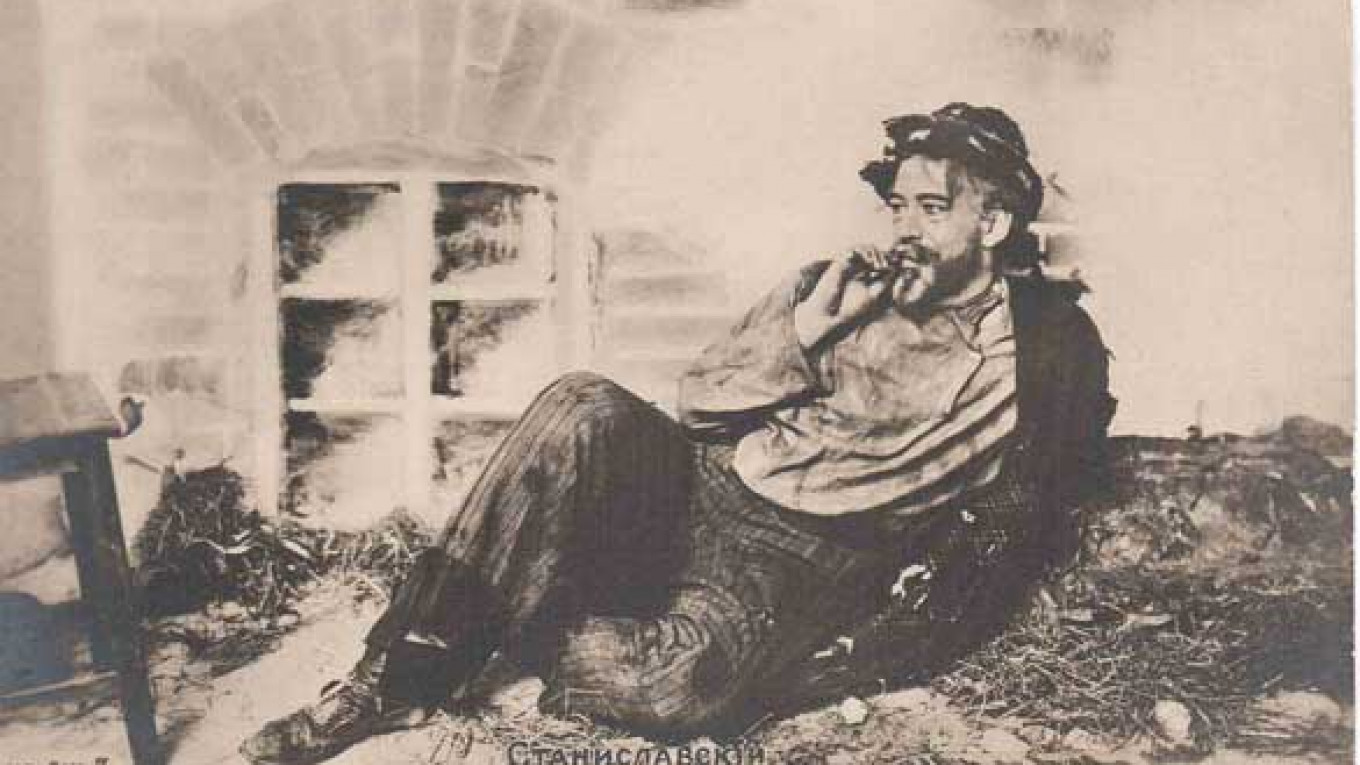I collected a million and a half baseball cards when I was a kid growing up. For those who are interested — yes, I do have a Pete Rose rookie card. (If that means nothing to you, go here.) But that’s a topic for another day.
Today I am thinking about Russian theater picture postcards. With all those baseball cards in my past, it should be no surprise that I would start buying up old Russian theater cards when I began running across them in Moscow decades later. In fact, I collect theater cards the same way I did baseball cards — I just grab whatever is at hand and think about it later.
Some of these items depict individuals who have gone down in history — Konstantin Stanislavsky, Vsevolod Meyerhold and Vasily Kachalov, for instance. Others show people I can’t find even in my five-volume encyclopedia of Russian theater. It makes no difference; all are fascinating glimpses into the past.
The Moscow Art Theater appears to have been the most active of the theaters in getting these collector’s items out to the public. It is represented in my collection with picture cards of its famous early shows “Tsar Fyodor Ioannovich” (1898), “The Death of Ioann Grozny” (1899), “Three Sisters” (1901), “The Lower Depths” (1902), “Julius Caesar” (1903) and many others.
I can only say for sure when a few of these were originally published — some are dated 1903 and 1904. All of the Art Theater cards, however, were published before the Revolution: The texts in each use the “hard sign,” the so-called “decimal i” and the “yat,” all of which were abolished from the alphabet by government decree in 1918. Some were printed by a company called Phototypie Scherer, Nabholz & Co., others by Pavlov Phototype (Fototipia Pavlova) or K. A. Fisher Publisher, and some list no printer at all.
While the Art Theater preferred to publish portraits and close-up scene shots, the Maly Theater, when it began putting out cards much later, tended to provide full-blown production shots showing off the entire stage. I am particularly intrigued by a photo from Act Two of Alexander Ostrovsky’s “Wolves and Sheep.” I can’t decide if the props man was in a hurry the day he put those candles up on the wall or if he put them in crooked on purpose to get that lived-in feel. I’m guessing this photo is from a production mounted in 1941. “Wolves and Sheep” was also produced at the Maly in 1935 and again in 1943. But 1941 seems the most likely of these dates, in part because I have similar cards from Maxim Gorky’s “The Barbarians,” which was mounted only in 1941.
For some reason I am especially fond of one card depicting a certain Baratov. Nothing printed on the card gives any more information. On the back side someone at a much later date added this:
Suvorin Theater.
“The Power of Darkness”
Baratov-Nikita
In fact, the Suvorin Theater in St. Petersburg first staged Leo Tolstoy’s “The Power of Darkness” in 1895. I rather doubt that the card in my possession dates back that far, but who knows?
I am struck every time I look at these photos by how different theater was a century or so ago. There is something simple, direct, straightforward and substantial about it — as if you can tell that theater really had no other mediums to compete with. No multiplex cinemas, no HD television broadcasts, no DVDs, no internet streams. Or is this just my imagination making up for what I really don’t know?
Browse through the photo gallery above and get a feel for Russian theater way back when.
A Message from The Moscow Times:
Dear readers,
We are facing unprecedented challenges. Russia's Prosecutor General's Office has designated The Moscow Times as an "undesirable" organization, criminalizing our work and putting our staff at risk of prosecution. This follows our earlier unjust labeling as a "foreign agent."
These actions are direct attempts to silence independent journalism in Russia. The authorities claim our work "discredits the decisions of the Russian leadership." We see things differently: we strive to provide accurate, unbiased reporting on Russia.
We, the journalists of The Moscow Times, refuse to be silenced. But to continue our work, we need your help.
Your support, no matter how small, makes a world of difference. If you can, please support us monthly starting from just $2. It's quick to set up, and every contribution makes a significant impact.
By supporting The Moscow Times, you're defending open, independent journalism in the face of repression. Thank you for standing with us.
Remind me later.


